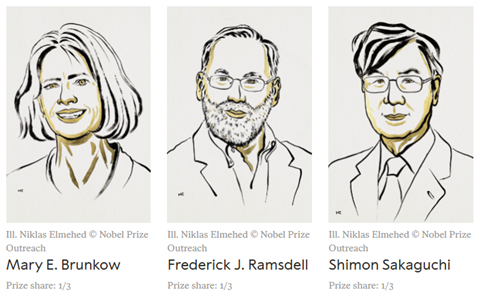A research team at The University of Osaka, joined by Professor Shimon Sakaguchi – the latest Nobel Laureate in Physiology or Medicine – has identified a previously uncharacterized subset of immune cells called precursor T follicular regulatory cells (preTfr) that play a critical role in preventing autoantibody production.

The study, published in Science Advances, reveals that these cells are significantly reduced in patients with severe COVID-19 and sepsis, and their loss correlates with increased levels of harmful autoantibodies against interferon-gamma.
T follicular regulatory (Tfr) cells are specialized immune cells that control antibody production. While researchers knew that circulating Tfr existed in the blood, the stages of their development remained unclear. This study demonstrates that a significant proportion of circulating Tfr have a naïve-like phenotype called preTfr, characterized by CD45RA and CXCR5 expression.
The research team found that preTfr cells are expandable in laboratory conditions while retaining immune-suppressive capacity. When stimulated, these cells increase expression of suppressive molecules such as IL-1RA, suggesting they are primed for differentiation into mature Tfr. The study also revealed that preTfr possess enhanced wound healing capacity.
Response patterns
In blood samples from patients with severe COVID-19, bacterial sepsis, and healthy controls, both preTfr and mature Tfr were significantly reduced in COVID-19 and sepsis. Conventional naïve regulatory T cells remained stable, indicating preTfr have a distinct response pattern during severe infections. The reduction in preTfr correlated with increased anti-interferon-gamma autoantibodies in late COVID-19. Patients with these autoantibodies also showed increased activated atypical B cells.
Unlike severe infection, SARS-CoV-2 mRNA vaccination increased both preTfr and mature Tfr frequency, particularly after later doses, suggesting preTfr participate in well-regulated immune responses but their loss during severe infection causes dysregulation and autoimmune antibody production.
“These data suggest that Tfr are disrupted at the earliest stage of their formation during severe disease,” says Dr. James B. Wing, corresponding author. “The discovery of preTfr as a distinct immune subset has important implications for understanding why some patients develop autoantibodies during severe infections and may provide new therapeutic targets for future vaccine developments and treatments for autoimmune diseases.”
Nobel Prize winners
This week, it was announced that the Nobel Prize in Physics 2025 had gone to John Clarke, Michel H. Devoret and John M. Martinis “for the discovery of macroscopic quantum mechanical tunnelling and energy quantisation in an electric circuit.”
The Nobel Prize in Chemistry 2025 was awarded to Susumu Kitagawa, Richard Robson and Omar M. Yaghi “for the development of metal–organic frameworks.”
The Nobel Prize in Physiology or Medicine 2025 went to Mary E. Brunkow, Fred Ramsdell and Shimon Sakaguchi “for their discoveries concerning peripheral immune tolerance”.
The laureates identified the immune system’s security guards, regulatory T cells, which prevent immune cells from attacking our own body.
“Their discoveries have been decisive for our understanding of how the immune system functions and why we do not all develop serious autoimmune diseases,” says Olle Kämpe, chair of the Nobel Committee.
First key discovery
Shimon Sakaguchi was swimming against the tide in 1995, when he made the first key discovery. At the time, many researchers were convinced that immune tolerance only developed due to potentially harmful immune cells being eliminated in the thymus, through a process called central tolerance. Sakaguchi showed that the immune system is more complex and discovered a previously unknown class of immune cells, which protect the body from autoimmune diseases.
Mary Brunkow and Fred Ramsdell made the other key discovery in 2001, when they presented the explanation for why a specific mouse strain was particularly vulnerable to autoimmune diseases. They had discovered that the mice have a mutation in a gene that they named Foxp3. They also showed that mutations in the human equivalent of this gene cause a serious autoimmune disease, IPEX.
Two years after this, Shimon Sakaguchi was able to link these discoveries. He proved that the Foxp3 gene governs the development of the cells he identified in 1995. These cells, now known as regulatory T cells, monitor other immune cells and ensure that our immune system tolerates our own tissues.
The laureates’ discoveries launched the field of peripheral tolerance, spurring the development of medical treatments for cancer and autoimmune diseases. This may also lead to more successful transplantations. Several of these treatments are now undergoing clinical trials. The full scientific background to their discoveries can be found HERE.







No comments yet